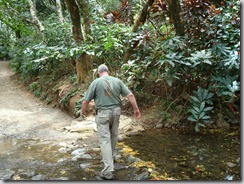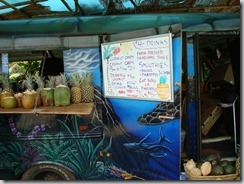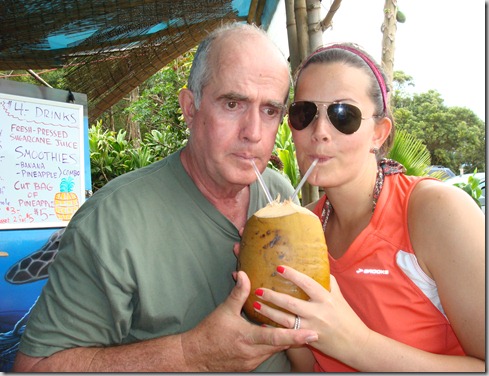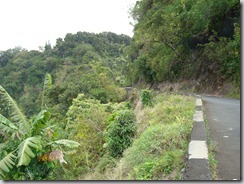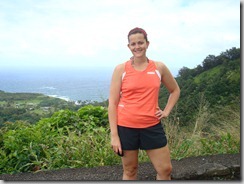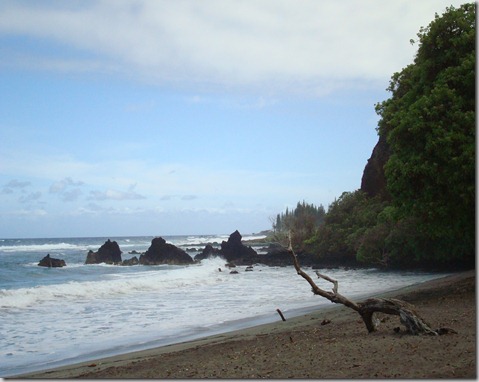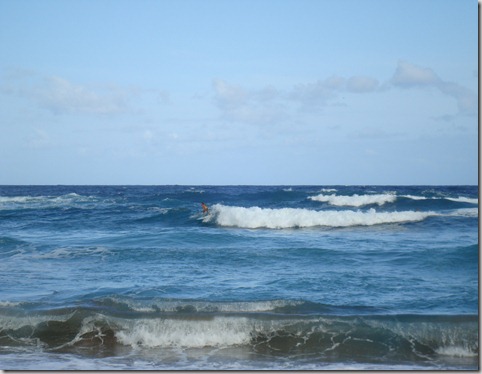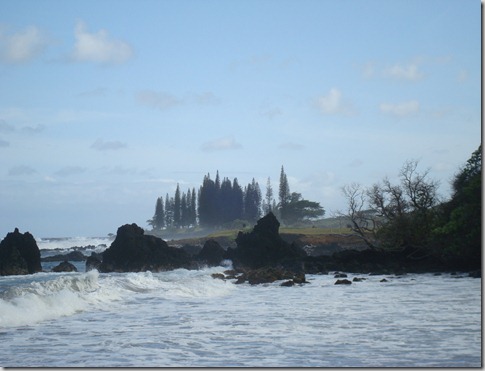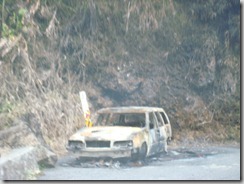Marathons+Moderation: Ragnar Style
With Reach the Beach coming up in less than a month, I thought it would be a great idea to have Chrissy join us for another guest post on how to prepare for a relay style race. Some of these things I never would have thought of so I’m glad to have this post as a resource as our New Balance Reach the Beach team starts getting in the final preparation mode!! As always, if you have questions, leave them in the comment section and Chrissy will respond!
Hello again! Chrissy here, ready to follow up my last guest post with some tips for preparing for a relay race. I’m going to cover 3 topics today – training, packing and nutrition. I am just days away from Ragnar SoCal, so things are getting pretty real!
Training
Training for a relay seems daunting, but it really isn’t! You will run a total mileage between a half marathon and marathon, but probably not run more than 8 miles at once. Here’s the runner distances for Ragnar Relay SoCal:
|
Runner |
1st Leg |
2nd Leg |
3rd Leg |
Total |
|
1 |
5.1 miles | Moderate |
10.0 miles | Very Hard |
5.5 miles | Hard |
20.6 miles |
|
2 |
5.1 miles | Moderate |
9.2 miles | Very Hard |
7.3 miles | Hard |
21.6 miles |
|
3 |
5.4 miles | Moderate |
8.3 miles | Very Hard |
5.3 miles | Moderate |
19 miles |
|
4 |
4.6 miles | Moderate |
6.6 miles | Hard |
2.0 miles | Easy |
13.2 miles |
|
5 |
2.4 miles | Easy |
6.0 miles | Hard |
7.5 miles | Very Hard |
15.9 miles |
|
6 |
2.7 miles | Easy |
7.4 miles | Very Hard |
4.2 miles | Moderate |
14.3 miles |
|
Chrissy |
8.8 miles | Very Hard |
3.7 miles | Moderate |
7.1 miles | Hard |
19.6 miles |
|
8 |
3.9 miles | Moderate |
4.0 miles | Moderate |
7.8 miles | Very Hard |
15.7 miles |
|
9 |
4.9 miles | Moderate |
3.8 miles | Easy |
11.1 miles | Very Hard |
19.8 miles |
|
10 |
5.7 miles | Hard |
2.0 miles | Easy |
5.8 miles | Moderate |
13.5 miles |
|
11 |
5.5 miles | Hard |
3.9 miles | Easy |
4.9 miles | Moderate |
14.3 miles |
|
12 |
4.6 miles | Moderate |
4.7 miles | Moderate |
6.3 miles | Hard |
15.6 miles |
You can see that the runner totals range from 13 to 21 miles. Leg distances range between 2 and 11 miles (11 miles is not common, I promise!). The race organizers do what they have to do to guarantee safety throughout the course. And we’ve assigned legs within our team according to each runners comfort level and ability. For instance, Runner #4 just started running about 9 months ago and is quite pleased with his short runs and Runner #2 is our most accomplished runner. I chose Runner #7, just because my third run is through Torrey Pines state park and La Jolla (where I fell in love with Open Water Swimming at LJRWS).
I’ll get to run right by La Jolla Cove!
Since I’m not an accomplished runner, I checked out Ragnar’s website for a beginner training plan. Here it is:
Since I’m not an accomplished runner, I checked out Ragnar’s website for a beginner training plan. Here it is:
|
Week |
Mon |
Tues |
Weds |
Thurs |
Fri |
Sat |
Sun |
|
1 |
15MN |
R/C |
15MN |
R/C |
15MN |
R/C |
Rest |
|
2 |
15MN |
R/C |
15MN |
R/C |
15MN |
R/C |
Rest |
|
3 |
15MN |
R/C |
15MN |
R/C |
15MN |
15MN |
Rest |
|
4 |
15MN |
R/C |
15MN |
R/C |
15MN |
20MN |
Rest |
|
5 |
15MN |
R/C |
15MN |
R/C |
15MN |
25MN |
Rest |
|
6 |
20MN |
R/C |
20MN |
R/C |
15MN |
30MN |
Rest |
|
7 |
20MN |
R/C |
30MN |
R/C |
20MN |
40MN |
Rest |
|
8 |
25MN |
R/C |
25MN |
R/C |
20MN |
45MN |
Rest |
|
9 |
25MN |
R/C |
30MN |
R/C |
25MN |
50MN |
Rest |
|
10 |
30MN |
R/C |
35MN |
R/C |
25MN |
55MN |
Rest |
|
11 |
30-H |
R/C |
40MN |
R/C |
30MN |
60MN |
Rest |
|
12 |
35-H |
R/C |
45MN |
R/C |
30MN |
20/20MN |
Rest |
|
13 |
35-H |
R/C |
50MN |
R/C |
35MN |
80MN |
Rest |
|
14 |
40-H |
R/C |
55MN |
R/C |
35MN |
25/25MN |
Rest |
|
15 |
40-H |
R/C |
60MN |
R/C |
40MN |
100MN |
Rest |
|
16 |
45-H |
R/C |
65MN |
R/C |
45MN |
30/30MN |
Rest |
|
17 |
45-H |
R/C |
70MN |
R/C |
30MN |
120MN |
Rest |
|
18 |
50-H |
R/C |
60MN |
R/C |
30MN |
35/35/35MN |
Rest |
|
19 |
60-H |
R/C |
50MN |
R/C |
40MN |
20/40MN |
Rest |
|
20 |
30MN |
R/C |
20MN |
Rest |
Race |
Race |
Sleep! |
MN- Minutes to run
R/C – Rest/Crosstrain
H – Hilles
xx/xx – 2 a day
xx/xx/xx – 3 a day
Sleep! – Sleep!
What I immediately noticed and I’m sure you did as well (because we are all so smart) is that it looks almost identical to a half marathon training plan in terms of running frequency and distances (or times in this training plan). The biggest difference we see is starting in week 12 there is an addition of 2 runs a day or 3 runs a day. To be honest with you, I never ran 3 times in one day to train for this, but what I did do is run Sat morning and night followed by Sunday morning. I’d rather stretch it across 2 days than dedicate an entire day to running and that worked out just fine.
Running Phoneline Trail at Sabino Canyon Park
Additionally, my relay buddies and I LOVE to make group runs out of this. We’ll all meet at a local park and run together. Just this weekend, we tackled a super hard trail run in Tucson. With our out of town friends, we update via email or chat what kind of mileage we are putting down in preparation for the big race.
Keeping each other accountable is a great way to make sure everyone is prepared. And when you are prepared, you are going to be able to focus on having FUN instead of worrying about running.
Packing (each person responsible for their own):
1. It is important to pack lightly. You have to share space with 5 other people and be very portable.
2. If you can, pack in a duffel or soft sided bag rather than a suitcase
3. My best advice is to put each of your 3 outfits and socks into a freezer-sized Ziplock bag while packing. When it is your time to run, pull out an outfit and put it on. When you change into your in-between clothing, put the sweaty clothes right back into that Ziplock bag. Why? Think about having 6 x 3 sets of smelly clothes in your van…gross. Keep the smell down and break out the Ziplocks! Everyone will thank you.
Have to have:
Butt light
Headlamp
Batteries for butt light/headlamp
Reflective Vest
Clothing (including socks) for 3 runs
Running shoes (2nd pair if there is a chance of rain)
Clothing to wear between runs or while sleeping
Other shoes (flip flops)
Any gels/energy chews you’ll use for your runs
Way to store your stinky clothes (ziplock, waterproof sack)
Toiletries
USB to cigarette lighter adapter for cell phones
Nice to have:
Race Belt for your number (no re-pinning!)
Rain gear for non-running
Hydration system for while running (camelback, water bottle)
Ziplock bags
Bring an iPod full of songs the whole van will want to jam to
Baby Wipes
Sleeping bag, blanket, or pillow, sweatpants
Body Glide/ Vaseline
Bug Spray and Sunscreen
Camera
Tie down straps for van roof
Snuggie
Each Van should have:
Captain
Treasurer (assign a person to keep track of receipts)
Vans
Gas
Hotel
Community Food
Tshirts
Van Decorating Supplies- paint markers, streamers
Official Van Drivers (2 per van)
Cooler
Music/Radio Transmitter Cable
First Aid Kit
ibuprofen
ACE bandage
instant ice pack
band aids and neosporin
blister care
Van Binder
Race Bible (rules and maps from the Relay’s website)
Phone List
Laminate the phone list so that the runner can carry it with them. Make it small enough to fit into a running shorts pocket. Packing tape is a cheap way to laminate something.
Emergency Contacts, Allergy Info
Envelope for receipts
Hospital/urgent care locations
local area maps
Safety Pins for race numbers
2 way radios
USB and/or cigarette inverter
It’s also great to have team shirts or a team outfit. We saw girls decked out in silly hats, rainbow socks, and tutus. At the Del Sol relay in Phoenix, my friend Leah Rae’s team dressed up as cowboys and kept their outfits on for the entire race. Don’t take yourself too seriously and remember to have fun with it!
Here’s my Hubby wearing the pink camo shorts that have made it through 3 relays worn by each man on the team. Yuck.
Here’s the sweet cowgirl outfit Leah Rae wore for all her runs at Ragnar Del Sol 2012.
Nutrition
I think that eating during a relay race is one of the bigger challenges. With anywhere between 4 or 7 hours between runs and everyone running at different times and having different needs it can either be no big deal or a constant worry. For me it was a constant worry. Not only do I need more food than the average person, but I am extremely cranky when I don’t get to eat. I go through something akin to a panic attack that only my husband gets to see. I wasn’t sure I was ready to subject my friends to witness that side of me.
Getting community food for the van to share is a great idea. I think we spent under $20 per person to fill our van with the following items:
Bagels
Peanut Butter & Jelly
Chocolate Milk
Bananas
Beef Jerky
String cheese
Water
Ice
Sport Drink (powder or tablets work great)
Bars (clif/power/granola/etc.)
Gum
Trail mix
Salty snacks (crackers/cheese, pretzels, chips, chex mix, etc)
Paper Towels
While my van was able to share food, not everyone always agrees. If there is something you really want that someone else doesn’t want to share, buy it for yourself.
I have to share that I did not do well nutritionally during the Northwest Passage Ragnar Relay last year. My van stopped for a full meal at Olive Garden between our 1st and 2nd legs, but no one was hungry (except for me!) after leg 2, so we decided to drive to the exchange for leg 3 to sleep. This exchange was in the middle of a state park, surrounded by a Native American reservation, which meant there was no real food for miles, especially since it was past 8pm. The exchange was selling junk food (which we already had in the van) and I was desperate for some soup or a square meal. Instead, I literally ate everything left in the van (low blood sugar does weird things to me). I am talking 2 entire bags of beef jerky, chocolate milk, Cheez-its, and PB&J bagels. No quality food there, except maybe the chocolate milk. I was more than miserable. During the 3rd running legs, I stopped in porta-potties while our other runners ran. When it was my turn, I spent 6 miles wanting to knock on someone’s door at 4am to use the facilities. I survived, but it was a miserable 3rd run. But, while I learned a lesson, it certainly isn’t the experience that defined relay running for me, especially since I signed up so quickly for another one. The obvious question is…what will I do differently at SoCal? The biggest change is that I will bring my JetBoil along with some soup and camping meals for backup food. This is only a good idea if you are DRIVING to the race. You cannot bring camping fuel on an airplane and you don’t want to worry about finding something like that once you land at your destination. The other thing I would do differently would be to obtain good food when I see it, even if I’m not hungry yet. It can go in the cooler for later. I’d rather spend $5-10 for food insurance than feel the way I did on my third run.
The other lesson is to speak up when you are hungry, respect others if they do so and grab food whenever you have the chance (footlong subway for later, anyone?). There are some unknowns when it comes to running 200 miles of unfamiliar territory and one is whether there will be food when and where you want it.
Please ask any questions you have about final prep for your upcoming relay races! Does anyone else have good tips to share?



